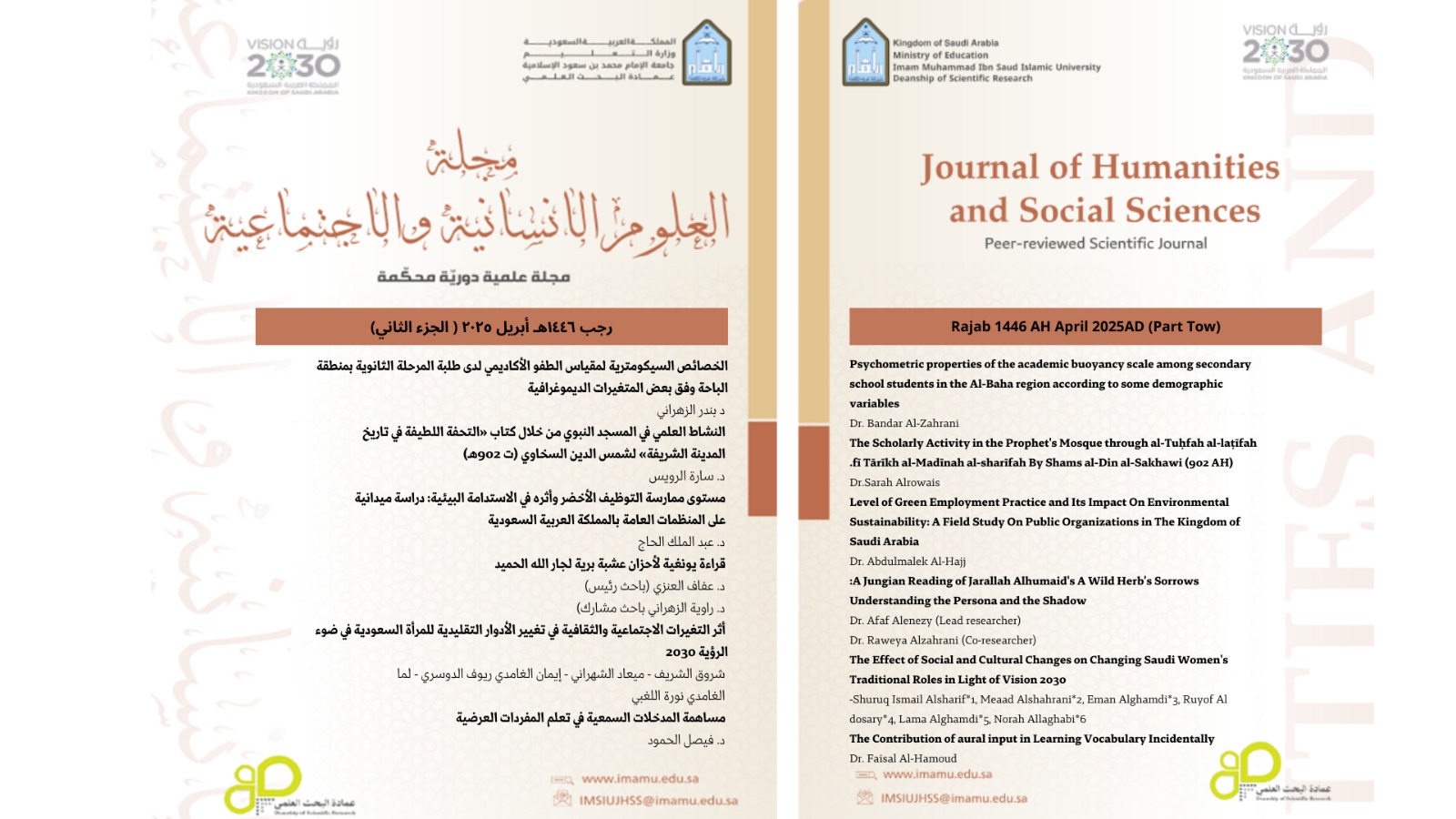The Contribution of aural input in Learning Vocabulary Incidentally
Keywords:
aural input, incidental vocabulary learning, reading while listening, visual input enhancementAbstract
It is becoming increasingly evident that L2 learners acquire new words incidentally through exposure to aural input, which leads to vocabulary development. Despite this, our understanding of incidental vocabulary learning from various aural input modes is still limited. Using a pretest-posttest design, this study explored how different treatments: listening only, reading while listening, and listening with visual enhancement (i.e., colors, pictures, and some highlighted words) contributed to vocabulary learning from a non-fiction text. Three levels of vocabulary gain were evaluated: (a) meaning recognition, (b) form recognition (now known as aural-form matching), and (c) meaning recall. To this end, 90 male school learners of EFL in Saudi Arabia were randomly assigned to three groups (N = 30 in each group). The results demonstrated that vocabulary learning took place through the three input conditions at the three levels of word knowledge. However, listening with a visual enhancement mode of input resulted in significantly greater vocabulary learning than listening only and reading while listening modes. The results indicated that there was no significant distinction between listening only and reading while listening conditions.
Furthermore, meaning recognition showed the most significant gains while meaning recall showed the smallest, suggesting an order of aural vocabulary learning. This study's findings suggest that listening can be enhanced with visual aids to promote incidental vocabulary learning. Pedagogical implications and directions for future research are addressed.




